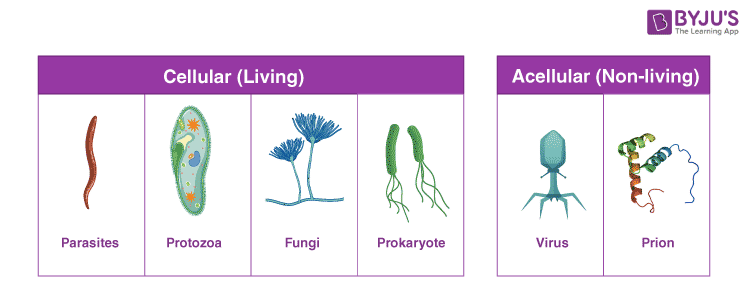Table of Contents

What are Pathogens?
Pathogen is an organism or a biological agent that can cause a disease in another organism. Pathogens are known to cause diseases upon infecting other organisms. Therefore, diseases caused by pathogens are known as infectious diseases. ‘Pathogen’ is a broad term which comprises various disease-causing organisms such as bacteria, viruses, fungi, protozoans and worms.

Classification of Pathogens
Pathogens are classified into four main categories concerned with the classes of pathogenicity relying on general risk analysis and assessment available under the purview of the present practical and theoretical frameworks. These include:
Class 1
One of the below criteria has to be covered by the microbial species like:
Species that are not associated with any infectious disease in healthy adult humans. This group includes a list of animal agents in common use. These agents represent little to no risk to an individual or a community.
Class 2
Pathogenic species which are known to cause diseases in humans, but these diseases are rarely serious. Also, preventive methods and treatments are available against these diseases.
Class 3
These are species which are known to cause serious diseases in humans, but necessary prophylaxis and treatment are already available.
Class 4
Species that cause serious human disease, which are likely to disseminate in the human population and for which no adequate prophylaxis or therapy exists.
For more information about the Pathogens infectious diseases and other related topics, visit us at BYJU’S Biology.

Comments